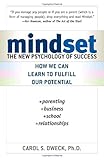
I bet you thought this was a post about a bill I didn’t pay. As if! Instead, this is an article about collecting things as a hobby.
Collecting can be fun, educational, and sometimes profitable. But some collections are prohibitively expensive both in terms of money spent, and the wasteful amount of stuff one acquires. Not to mention the toxic “collect them all” mindset that can plague compulsive collectors.
For a collection to be frugal, it needs to meet the following three criteria. Collectables must be…
- Cheap or free to acquire
- Easy to store
- Useful to own
Examples of frugal collections:
- Shells, or other beautiful artifacts from travel (be sure to Leave No Trace in protected areas)
- Postcards (Mrs. Foundry collects these)
- Keychains (The Mini Foundries collect these)
Examples of non-frugal collections*:
- Guns (fails test 2)
- Sports cars (fails tests 1 and 2)
- Antique bureaus (fails tests 1, 2, and 3)
When I was a boy, I collected pins and baseball cards. I was unwittingly part of the baseball card bubble of the early 1990s, which means crafty grownups got rich on my allowance money. Pins are a great frugal collection, but baseball cards are in a frugal grey area (at best), since they’re inexpensive (unless you have a taste for Babe Ruth rookie cards) and easy to store, but not very useful on their own.
Now I collect two things: bookmarks and rubber-bands. The latter I store in an ever-growing rubber-band ball, which I admit is very silly in a Peewee Herman kind of way. But they come in handy now and then for craft projects and grouping stuff.
On the other hand, the bookmark collection is over 20 years in the making and very dear to me. Since I’m an avid reader, it comes in handy literally every day. It’s fun to sort though the collection and choose a bookmark that fits the book. They were mostly free (from bookstores) and the collection easily fits in a small box. People who know me bring back bookmarks from trips. It’s a very easy way to get on my good side.
You can even make your own bookmarks, like the ones pictured above. Try doing that with sports cars! Does anyone else have interesting collections?
The most frugal collection, of course, is money. Collect enough of that and you can retire, which will give you plenty of time to start many other frugal collections!
* I have nothing against cars, furniture, or guns. I own all three. I’m talking specifically about collecting lots of them.











